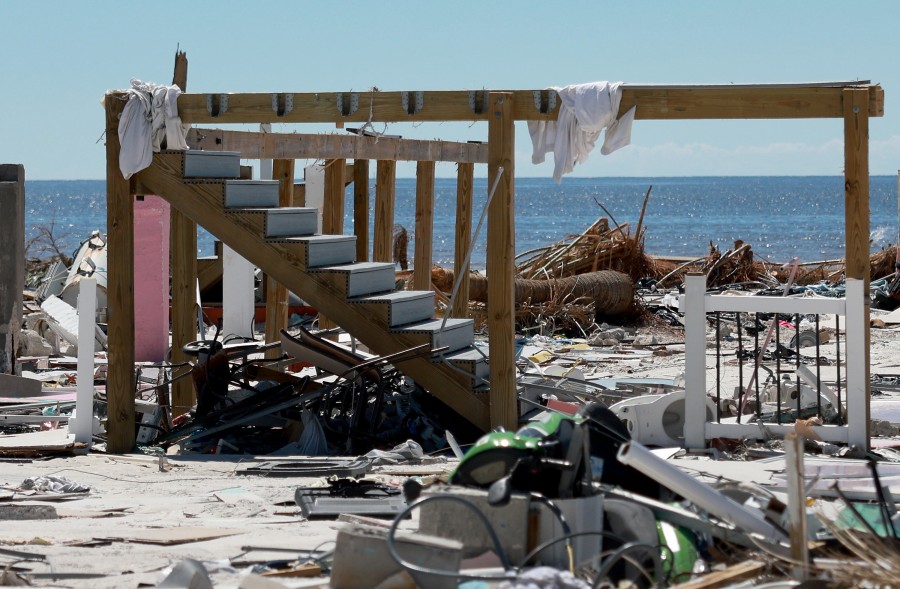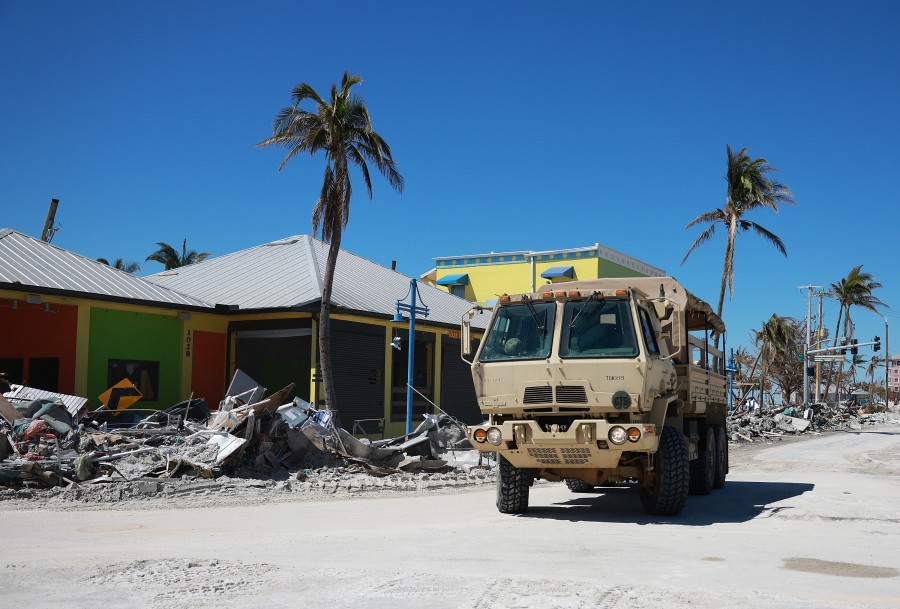Florida’s Popular Gulf Coast Islands Suffer Incredible Damage

Changes in the Town Likely to Minimize Future Storm Damages
The monster storm Ian brought immediate devastation to Fort Myers Beach like no other storm ever had. Residents who have had experience with hurricanes over many years reported an entirely different level of damage. Nobody had ever experienced the equal of the storm surges, churning waters, major flooding and complete devastation that Ian delivered as a Category 4 storm as it made landfall. Families suffered through the most terrifying experiences of a lifetime, and many people did so without power while stranded by floodwaters.
Read More »The monster storm ran through homes and businesses like a heated knife through butter, and Pacyna posted in Facebook that he and his wife were terrified. They changed their mind quickly and tried to escape, but only Mary survived. Pacyna’s death mirrored other obvious and hidden deaths throughout Florida. The grand totals may take weeks to confirm because of deaths at sea, death by flooding and deaths hidden away in places isolated by flood waters and severe structural collapses.

Damages Become Widespread Throughout Florida
Nobody knows for sure what the final verdict will be, but estimates place Ian firmly in place as the second most expensive storm in history. Only Katrina was more damaging, but it was almost three times as expensive as Ian. That’s primarily because of the levee failures that essentially stranded people for days.
Both storms were considered more dangerous than normal because of the effects of global warming. Hotter weather increases hurricane speed and strength while slowing down its movement over territory, which means longer exposure to torrential rain, hurricane-level winds and storm surges. A world that’s even 1-degree Celsius warmer can change the dynamic of storms by making them more intense and longer lasting as they travel more slowly.
Ian’s Effects on Fort Myers
Hurricane Ian essentially demolished the building where the Pacynas sheltered from the flood waters. The couple were trying to get to higher ground, but the talkative “mayor” didn’t make it. Similar scenarios confronted many Fort Myers residents while rescue workers searched frantically for survivors.
On Pine Island, the largest of the Gulf Coast Islands, food and water became scarce as people were trapped by an impassable bridge. Rescue volunteers with the Cajun Navy conducted rescue operations to find, identify and treat survivors who were in various kinds of distress.
Fort Myers Beach transformed from an ocean paradise with an easygoing flair to a disaster area of unprecedented proportions. Common habits of turtle watching, shrimping, all-in-one seafood boils and viewing magnificent sunsets suddenly became a struggle for food, water, dry land and survival from injuries.
In better times, Fort Myers Beach’s population swells from about 5,600 residents to tens of thousands of tourists during the prime season between March and May when students on spring break and other young people flock to these types of destinations. Beach bars usually survive storms with relative ease, but bars and restaurants that survived Hurricanes Irma and Charley now lay in ruins in addition to the widespread destruction of roads, buildings and other infrastructure necessary for rebuilding.
In an ironic about-face, Florida Governor DeSantis seeks substantial federal relief funds from the Biden Administration after strongly opposing relief measures for Hurricane Sandy as a congressman. According to information posted at nytimes.com. Congressman DeSantis declared hurricane relief for New York an “irresponsible boondoggle” that confirmed the mentality of putting expenses on credit, which he had bitterly opposed in his campaign for office.
Heartrending Descriptions of Ian-generated Damages
Aerial photography confirmed miles and miles of catastrophic damage along the Gulf Coast in Southwestern Florida. Shells of homes remain as focal points of destruction that will take lots of money to repair. About 20% of Florida homeowners don’t have flood insurance, and standard home coverage doesn’t pay for flood damage unless the homeowner buys specific flood insurance. Many homes might never be rebuilt as a result of that specific oversight.
White sand beaches have been replaced with mud, seaweed, waterlogged wood and storm debris, and it will take years to restore some areas to their former glory. Roofs have been completely ripped off of many businesses leaving the interiors exposed to the elements. Periodically, you might view survivors huddling around a small beach fire, but it’s nothing like the organized cookouts that formerly graced the area and attracted droves of tourists.

Work crews are highly visible throughout Florida as they strive to make repairs to support basic survival. Governor DeSantis reported that at least 2.2 million utility customers remain without power. Lee and Charlotte Counties have basically fallen off the electrical grid and require major repairs to infrastructure like the entire country of Cuba.
More than 800 search and rescue workers continue their complex urban searches to find hidden pockets of survivors and confirmed dead bodies. Fortunately, President Biden granted Governor DeSantis’ request for a disaster declaration, which frees up federal funds to cover 100% of storm-related expenses for 60 days.
Other Areas Reduced to Struggling for Survival
Throughout Florida, paradise environments transformed into war-ravaged zones where people struggled for survival. These island paradises include Sanibel Island and Pine Island, both of which struggled for basic nourishment and shelter. The economic strength of an economy based on tourism instantly evaporated, and the struggle to survive, rebuild and promote future tourism is at grave risk of failure.
Many long-term residents questioned their own internal strength to rebuild what was lost. Areas appear more desolate and damaged than battlegrounds after multiple bombing runs. Questions arise about whether this level of damage was caused by a seemingly innocuous increase of temperature by a couple of degrees.
The Verdict on Damages
Jared Moscowitz, a former Emergency Management director, surveyed the area from an aerial helicopter flight, and he revealed his estimate that nearly 80% of Fort Myers will need to be rebuilt from scratch. Other areas requiring a major rebuilding effort include Naples and many inland communities surrounding Orlando, which have suffered tremendous flooding damages. The extent of Ian’s destruction is difficult to understand because it clearly supasses the damages generated by other storms.





